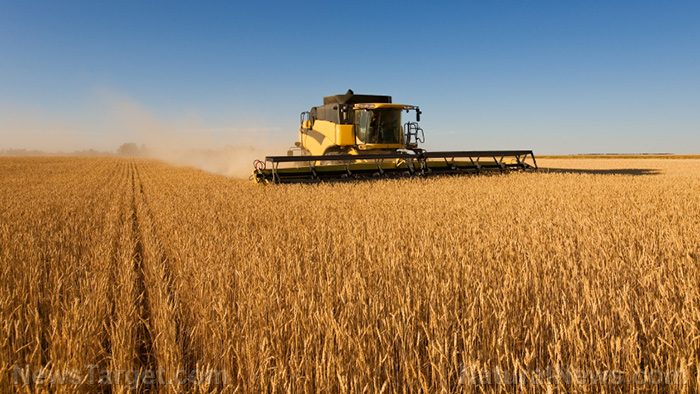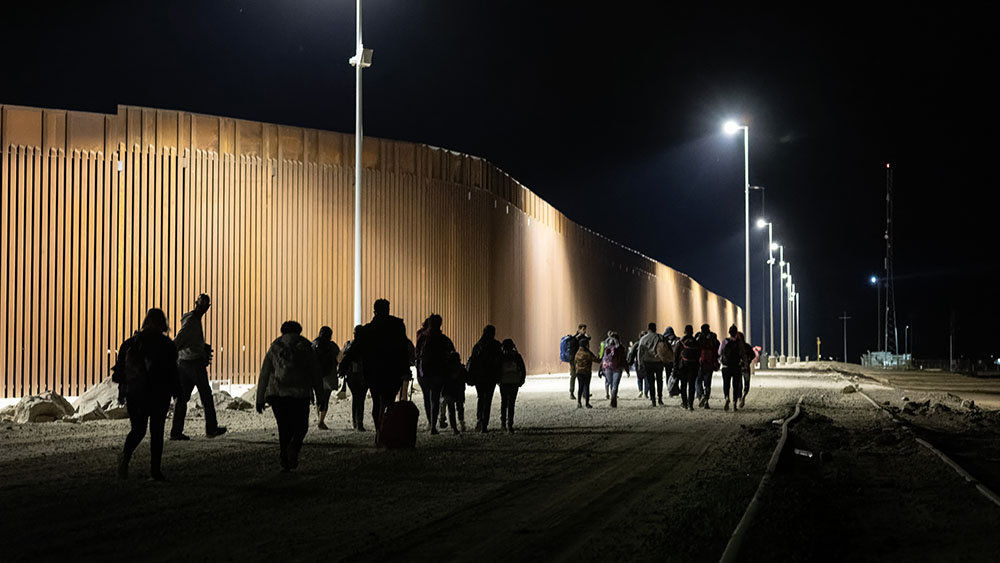
Dan Basse, president of agricultural industry research firm AgResource Company, noted that many of his clients in Ukraine "have been actually damaging their combines so the Russians can't combine the wheat."
"It's a war zone. It's messy. It's a shame, and our hearts bleed for the Ukrainians who are being harmed," said Basse. (Related: Ukraine reports two-thirds decrease in grain exports while global wheat prices skyrocket.)
Sergey Porada, 51, a farmer in the village of Fedorivka in the Zaporizhzhia Oblast (region), broke his combine harvester deliberately. Soon afterward, Russian soldiers occupying the region kept trying to get in touch with him to repair the machinery in time for the harvest.
"I broke it for a reason," he said, laughing, in an interview with the Wall Street Journal.
What equipment and farmland Russia can't seize, it reportedly targets for bombing campaigns, rendering what few growing crops and what little usable equipment left on farms destroyed.
Basse claimed that Russia has bombed refineries, seaports and other critical parts of Ukraine's infrastructure. He even estimated that between three to four of the country's top seven export terminals have sustained such major damage that months of work are necessary to repair them.
This means that even if farmers have kept their equipment intact and if their farmlands haven't been targeted by Russian artillery, many are still unable to access the diesel they need for their equipment to harvest the crops.
"If you were to place a diesel order today in the wheat areas, which is really central and western Ukraine, you would find that it's probably four to six weeks to get delivery on it," said Basse.
The Kyiv School of Economics has also estimated that the invasion has cost Ukraine's massive agricultural sector over $4.3 billion in destroyed equipment, damaged land and unharvested crops.
Ukraine unable to properly restart food production due to ongoing conflict
The threat of being caught in the middle of a battle or being targeted by artillery is preventing Ukraine's already crippled agricultural sector from being able to keep up with what little activity it can scrounge up.
Ukrainians have accused Russia of deliberately targeting the country's food production and export infrastructure to fully cripple the country's ability to recover economically.
"Agriculture is one of the few business sectors that is working," said farmer Volodymyr Onyschuk, whose nearly 5,000-acre wheat and sunflower field in the southern Mykolaiv Oblast was peppered by Russian artillery. "Of course, they want to destroy it. They want to end this stream of income into the country."
Even if Onyschuk was able to restart planting, the crops he can grow will be vulnerable to fire caused by further artillery strikes, which could be "hell" for farmers when the harvest season begins. All he's hoping for now is to survive until the next harvest, by which time the war will hopefully be over.
In farmland taken over by Russian troops, occupying forces are trying to get farmers to restart food production under the condition that they give a substantial portion of the harvest over to Russian forces.
Valery Stoyanov, 50, a farmer near the southern city of Melitopol, had his land taken over by Russian forces. He and his neighbors were allowed to stay on their land, but a large proportion of their crops had to be turned over to the Russians.
For Russian-occupied farmland with absent owners, Russians and Ukrainian sympathizers are handling food production on their own.
Petro Melnyk, who owns farmland all over Ukraine, including in the occupied part of eastern Ukraine's breakaway Luhansk Oblast, his only clue of what activity is currently going on in the area is from satellite images that show crops were planted.
Ukraine isn't the only country with food production being crippled.
Watch this episode of "The Ben Armstrong Show" as host Ben Armstrong talks about how over 90 food plants in the United States were attacked in the past six months.
This video is from the channel The New American on Brighteon.com.
More related articles:
Ukraine farmers unable to work on their fields due to war, increasing fears of global food shortages.
Sources include:
Please contact us for more information.





















